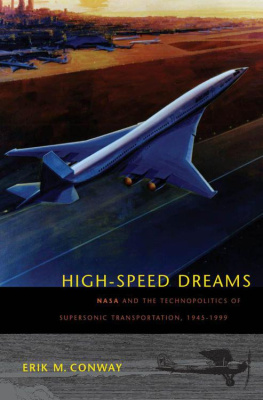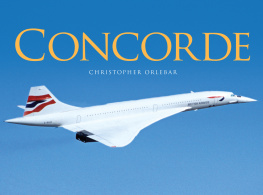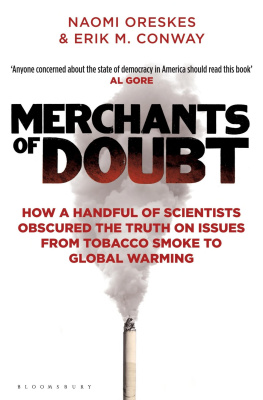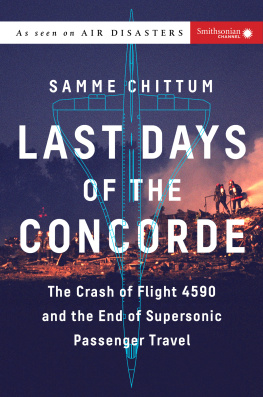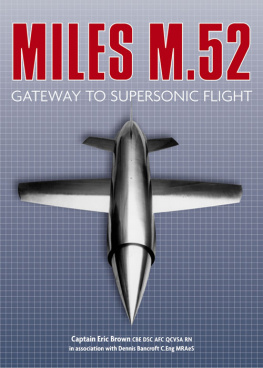HIGH-SPEED DREAMS
NEW SERIES IN NASA HISTORY
Roger D. Launius
SERIES EDITOR
RELATED BOOKS IN THE SERIES
Single Stage to Orbit: Politics, Space Technology,
and the Quest for Reusable Rocketry
Andrew J. Butrica
NASA and the Space Industry
Joan Lisa Bromberg
Space Policy in the Twenty-First Century
edited by W. Henry Lambright
The Space Station Decision: Incremental Politics
and Technological Choice
Howard E. McCurdy
Faster, Better, Cheaper: Low-Cost Innovation in
the U.S. Space Program
Howard E. McCurdy
HIGH-SPEED DREAMS
NASA AND THE TECHNOPOLITICS OF
SUPERSONIC TRANSPORTATION, 19451999
ERIK M. CONWAY

2005 The Johns Hopkins University Press
All rights reserved. Published 2005
Printed in the United States of America on acid-free paper
9 8 7 6 5 4 3 2 1
The Johns Hopkins University Press
2715 North Charles Street
Baltimore, Maryland 21218-4363
www.press.jhu.edu
Library of Congress Cataloging-in-Publication Data
Conway, Erik M., 1965
High-speed dreams : NASA and the technopolitics of supersonic transportation, 19451999 / Erik M. Conway.
p. cm. (New series in NASA history)
Includes bibliographical references and index.
ISBN 0-8018-8067-X (hardcover : alk. paper)
1. Supersonic transport planesPolitical aspectsUnited
StatesHistory20th century. 2. United States National
Aeronautics and Space AdministrationResearchHistory
20th century. I. Title. II. Series.
TL685.7.C695 2005
387.73349dc22 2004017271
A catalog record for this book is available from the British Library.
Title page illustration: Concept drawing of Boeing Reference H,
1992. Photo 92-03919, courtesy NASA and The Boeing
Company.
TO MY DEAR FRIENDS from the University of Minnesotas Program in the History of Science and Technology: Kai-Henrik Barth, Eric Boyles, Michael Buckley, Juliet Burba, Robert Ferguson, Steve Fifield, Kevin Francis, Eric Hinsdale, Mark Largent, Karin Matchett, Michael Reidy, Ioanna Semendeferi, Mary Thomas, Effy Vayena, and Chris Young.
Thanks for great times.
CONTENTS
PREFACE
This book grew out of a contract from the National Aeronautics and Space Administrations Langley Research Center, which has been my home since August 1999. I moved from a postdoctoral fellowship at the National Air and Space Museum in Washington, D.C., to Langley after the original awardee, Deborah G. Douglas, left Langley to become curator at the MIT Museum. In an unexpected telephone call, NASA Chief Historian Roger D. Launius invited me to submit a proposal for the rebidding. Without his willingness to take a risk on an unknown, recently graduated scholar, I would never have written this book.
The contract itself came about after NASAs High Speed Research program was cancelled. HSR, a $1.8 billion project to prepare new technologies for a second-generation supersonic transport, had run from 1990 until late in 1998. The programs leadership team then decided to fund a history of NASAs supersonic transport research over the past several decades, including HSR. Because their project office was closing down late in 1999, the Langley Research Centers Office of External Affairs administered the contract. Their decision to fund a history produced a rewarding but also frustrating experience for me and for my principal point of contact in the former HSR program, Virginia Gin Marks. HSR had been conducted under a new Limited Exclusive Rights doctrine to protect the intellectual property rights of the various contractors, and one ramification of that doctrine for us proved to be seemingly endless reviews of the two HSR chapters to ensure I did not violate that agreement. A second ramification was that, while I had full access to the programs documents, I was not allowed to cite any of them in my notes. That restriction, which I did not discover until after I had finished the first based almost entirely on oral histories to ensure an acceptable level of documentation. It had not been NASA policy prior to the late 1980s to restrict access to its publications except when they relate to military technologies; hence there is a sharp difference between the level of documentation in this books first six chapters, which explicitly draw on a portion of more than a thousand publicly available technical reports, and the final two. Political conditions change, and one corollary of the increasing corporatization of the American government has been its gradual abandonment of public purpose to better serve corporate demands.
Despite the restrictions and reviews, however, the opinions and arguments expressed herein are mine. I was not pressured in any way by my reviewers at NASA, at General Electric Aircraft Engines, or at the Boeing Company to change nontechnical material. Not everyone who read the many drafts of this work agrees with meor with each otherand errors of omission, commission, and interpretation are mine alone.
ACKNOWLEDGMENTS
In writing this book, I have been aided by many people who gave willingly of their time and effort. The readers of the manuscript made the largest sacrifices and were the greatest aid to me: NASA Chief Historian Roger Launius and his assistant, Stephen Garber; Langley Chief Scientist Dennis Bushnell; retired Boeing program managers Holden R. Bob Withington and Malcolm MacKinnon and still active Boeing engineer Robert Welge; GE Aircraft Engine managers Samuel Gilkey and Leigh Koops; NASA retirees Howard Wesoky, Louis J. Williams, Laurence K. Loftin, Jr., Cornelius Driver, William Aiken, Jack Suddreth, Dominic Maglieri, and Richard T. Whitcomb; and my former dissertation advisor Arthur L. Norberg. Their comments improved the text enormously and saved me from many errors. So too did the comments of three anonymous reviewers recruited by the NASA History Office and several other persons who read smaller portions of the work, including Robert Joe Shaw, Robert Golub, Rodney Ricketts and William Gilbert of NASA, and Michael McCloskey from the Sierra Club. Thank you all.
My long-distance intellectual companion in this quest was Deborah G. Douglas, curator of the MIT Museum. Many thanks for getting a better job and leaving this one to me, for many hours of conversation about NASA and the aircraft industry, and for the occasional spot on the floor for Boston-area research visits. Stuart McCook of the University of Guelph was a sounding board for thoughts about environmental history, aviation, and the space agencys role in both. Andrew Butricas insights on the conservative space movement were very helpful in formulating the last few chapters of this book. James R. Hansen of Auburn University, who started a similar project many years ago, left a variety of documents and provided some excellent early advice. Jessica Wang at the University of California at Los Angeles hosted a lengthy California stay, and our conversations about the politics of modern science over the years have been very valuable.
I interviewed a great many people in researching this booktoo many to acknowledge here. A complete list is in the bibliography. I want to thank a few non-NASA people whose testimony was critical but who could easily have used institutional barriers to avoid me. Michael Henderson, Malcolm MacKinnon, Bob Welge, Bruce Bunin, Bob Withington, and John Swihart of the Boeing Company; Sam Gilkey, Leigh Koops, and Andrew Johnson of GE Aircraft Engines; Harold Johnston of the University of California, Berkeley, and Michael Prather of the University of California, Irvine; and Leo Beranek of Bolt, Beranek and Neumann all gave unstintingly of their time, and Im grateful. NASA histories rarely manage to integrate the contractor end of NASAs programs due to the sheer difficulty of the task, and its the contractors who do most of the work and spend most of the money. This is a far better story due to their aid.
Next page
